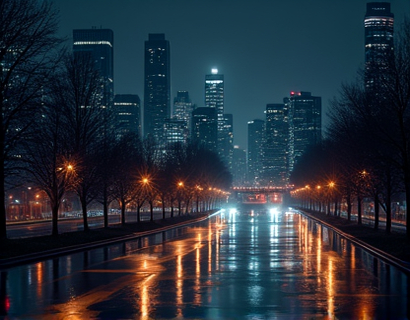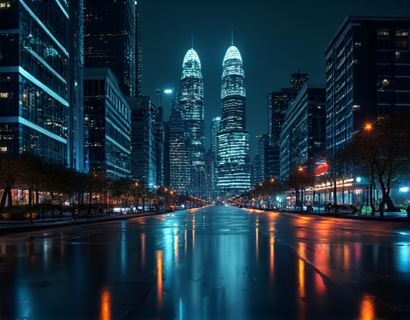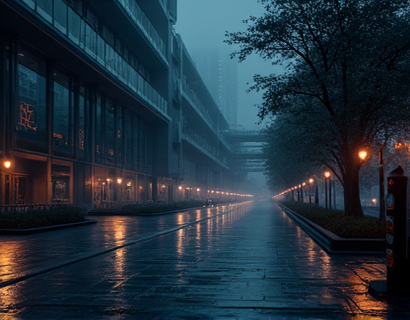Comprehensive Guide to the Cultural Heritage, Historical Sites, and Local Essentials of the Ancient Indus Valley
The Indus Valley, a cradle of one of the world's oldest civilizations, beckons travelers with its rich tapestry of history, culture, and natural beauty. This guide delves deep into the heart of this ancient region, offering an exhaustive exploration of its cultural heritage, historical sites, and practical travel advice. Whether you are a cultural heritage enthusiast or a history buff, this comprehensive guide will enrich your journey and provide insights to make the most of your visit.
Historical Background of the Indus Valley
The Indus Valley, named after the Indus River which flows through the region, was home to the Indus Valley Civilization, one of the world's earliest urban civilizations. Flourishing around 2600 BCE to 1900 BCE, this civilization was contemporaneous with the Egyptian and Mesopotamian civilizations. The Indus Valley Civilization is renowned for its advanced urban planning, sophisticated water management systems, and unique script, which remains undeciphered to this day.
The civilization was spread across a vast area, encompassing parts of present-day Pakistan, India, and Afghanistan. The two major cities, Mohenjo-Daro and Harappa, are the most studied and visited sites, offering a glimpse into the sophisticated urban life of the time. These cities were built with baked bricks, featured advanced drainage and irrigation systems, and had large public baths, indicating a high level of social organization and engineering prowess.
Cultural Heritage of the Indus Valley
The cultural heritage of the Indus Valley is a testament to the ingenuity and sophistication of its people. The artifacts and structures found in the region provide valuable insights into the daily life, religious practices, and social structure of the Indus Valley Civilization.
One of the most significant cultural artifacts is the figurines of the "Mother Goddess," often depicted with multiple arms and surrounded by animals. These figurines suggest a matriarchal or goddess-centric religious system. The presence of seals with intricate carvings, often depicting animals and urban scenes, indicates a well-developed trade system and a form of written communication.
The Indus Valley people were skilled craftsmen, producing pottery, jewelry, and tools from a variety of materials including clay, stone, and metal. The quality and craftsmanship of these items are a testament to their advanced technological skills. The discovery of weights and measures at various sites suggests a standardized system for trade and commerce.
Major Historical Sites to Visit
Visiting the historical sites of the Indus Valley is a journey through time, offering a tangible connection to one of the world's earliest urban civilizations.
Mohenjo-Daro
Located in the Sindh province of Pakistan, Mohenjo-Daro is one of the most well-preserved cities of the Indus Valley Civilization. The site covers an area of about 300 acres and is divided into two main parts: the Citadel and the Lower Town.
The Citadel, elevated on a platform, features the Great Bath, a large public bathing facility with a sophisticated drainage system. The surrounding buildings, including granaries and residential areas, showcase the advanced urban planning of the Indus people. The Lower Town, on the other hand, provides a glimpse into the daily life of the common people, with homes, workshops, and streets lined with drainage channels.
Harappa
Situated in the Punjab province of Pakistan, Harappa is another significant site that offers a comprehensive view of the Indus Valley Civilization. The city is known for its well-planned streets, grid layout, and the discovery of the "Pashupati Seal," which some scholars believe to be a representation of Shiva.
The Granary at Harappa is one of the most impressive structures, indicating the importance of agriculture and trade. The site also features a large public bath, similar to the one at Mohenjo-Daro, and a series of residential buildings that provide insights into the social hierarchy and living conditions.
Dholavira
Located in the Rann of Kutch in Gujarat, India, Dholavira is one of the lesser-known but equally fascinating sites. The city is known for its sophisticated water management system, including reservoirs, stepwells, and a complex network of drains.
The layout of Dholavira is unique, with a fortified citadel, a middle town, and a lower town, each with its own set of structures and features. The site also includes a large public bath and a series of temples, indicating a rich religious and cultural life.
Practical Travel Advice for Visiting the Indus Valley
Planning a trip to the Indus Valley requires careful consideration of several factors to ensure a smooth and enriching experience.
Best Time to Visit
The optimal time to visit the Indus Valley sites is from October to March, when the weather is pleasant and cooler. Summers can be extremely hot, with temperatures often exceeding 40°C, making outdoor exploration challenging. Monsoons from July to September can also affect travel plans due to heavy rains and flooding in some areas.
Getting There
The Indus Valley sites are well-connected by air, road, and rail. Karachi and Lahore are the primary entry points, with domestic flights and buses connecting to cities like Sindh and Punjab. For international travelers, the nearest airports are in Karachi and Lahore, with several flight options from major cities around the world.
Once at the sites, local taxis and rickshaws are available for transportation. However, it is advisable to use reputable services to ensure safety and convenience.
What to Pack
When packing for your trip, consider the climate and the nature of the sites. Lightweight, breathable clothing is recommended for the warmer months, while layers are essential for the cooler evenings. Comfortable walking shoes are a must, as you will likely be doing a lot of walking at the sites.
Don't forget to bring a hat, sunglasses, and sunscreen to protect yourself from the sun. A reusable water bottle is also a practical and eco-friendly choice to stay hydrated.
Local Cuisine and Dining
The cuisine of the Indus Valley region is a delightful blend of flavors, influenced by its rich history and diverse cultural heritage. Traditional dishes include biryani, kebabs, and various vegetarian options made from lentils, vegetables, and spices.
Street food is a popular and affordable way to experience local flavors. Samosas, pakoras, and sev puri are common snacks that can be found at roadside stalls. For a more refined dining experience, seek out local restaurants that offer authentic regional cuisine.
It is also a good idea to try some of the local beverages, such as lassi and sharbat, which are refreshing and hydrating. However, be mindful of local customs and drink only from trusted sources.
Local Attractions and Hidden Gems
While the major historical sites are a must-see, the Indus Valley region offers a wealth of lesser-known attractions and hidden gems that can enrich your travel experience.
Thatta
Located near Mohenjo-Daro, Thatta is a city with a rich history dating back to the Indus Valley period. The city is known for its stunning mosques and the Shah Jahan Mosque, a UNESCO World Heritage Site. The surrounding area offers beautiful landscapes and a glimpse into rural Pakistani life.
Naro Moro
Naro Moro, a small village in Sindh, is home to the ancient Naro Moro Fort, a well-preserved fortification that dates back to the 17th century. The fort offers panoramic views of the surrounding countryside and is a lesser-known but equally fascinating site.
Kutch Desert Festival
For those interested in experiencing the local culture, the Kutch Desert Festival in Gujarat is a unique event that celebrates the region's art, music, and traditions. Held in the Rann of Kutch, the festival features performances by local and international artists, traditional crafts, and a chance to explore the desert landscape.
Essential Resources for Travelers
To make the most of your journey through the Indus Valley, here are some essential resources and tips:
- Guidebooks and Maps: Carry a detailed guidebook and a map to help navigate the sites and understand the historical context.
- Local Guides: Hiring a local guide can provide deeper insights and ensure a more meaningful experience.
- Cultural Etiquette: Respect local customs and traditions, especially when visiting religious sites. Dress modestly and ask permission before taking photographs.
- Sustainable Tourism: Support local businesses and communities by choosing eco-friendly accommodations and participating in responsible tourism practices.
- Health and Safety: Stay hydrated, use sunscreen, and be aware of your surroundings to ensure a safe and enjoyable trip.
By following these tips and immersing yourself in the rich history and culture of the Indus Valley, you will create lasting memories and a deeper appreciation for one of the world's most fascinating regions.










































